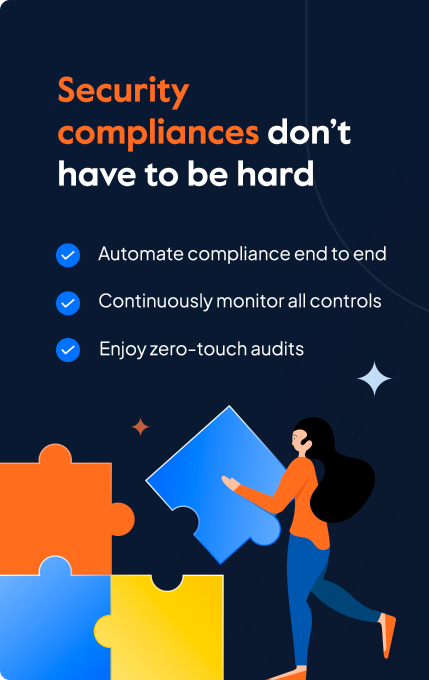Sprinto’s Information Security Roles & Responsibilities Template
An information security roles and responsibilities template ensures security accountability, enhances risk management, streamlines operations, and fosters a security-conscious culture.

What is an information security roles and responsibilities policy template?
An information security roles and responsibilities template outlines the organizational structure for information security detailing specific roles, responsibilities, and competencies required for maintaining a strong security posture. It covers everyone from the CEO to end-users and third-party employees, ensuring a comprehensive approach to security management.
Why do you need this template?
This template helps you eliminate ambiguity, ensures comprehensive coverage of security aspects, facilitates effective communication, supports compliance, enables smoother incident response, and provides a basis for performance evaluation and training needs assessment.

Better collaboration
Create strong guidelines for communicating and resolving breaches while ensuring notifications include the right information.

Proactive response
Enhance the preparedness of recovery teams by providing a set framework, and ensuring quick responses.

Definition of roles
Eliminate last-minute chaos by providing clear step-by-step protocols, defining roles and assignments, and enabling actionability.

Cost savings
Protect your organization against financial losses, legal liabilities, and reputational damages with a consciously developed continuity plan.
How to use the information security roles & responsibilities template?

Design and customize
Customize this template according to your business context and security requirements. Be forward-thinking when applying its scope to your business.

Test your template
Validate the steps included in this template for accuracy. Test the policy template and make changes to ensure proximity to the business context.

Acquaint your workforce
Educate your workforce on the scope of the policy, their roles and responsibilities within the function it covers, and how to use it effectively.

Make improvements
Review your policy on a regular basis (ideally once every 6 to 12 months) to ensure it is up to date and aligned with industry requirements.

Leverage automation
Roll out policies, schedule security and policy training, and gain completion acknowledgements within a single interface to ensure 100% adherence.
Information Security Roles & Responsibilities Template
Get started with this template right now. It’s free


